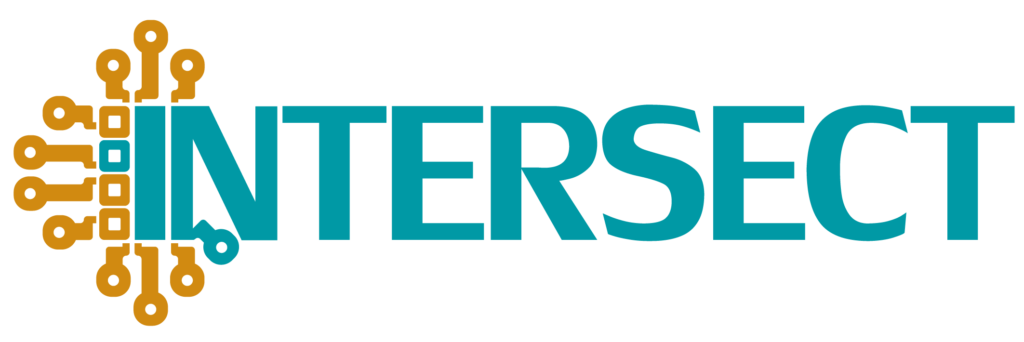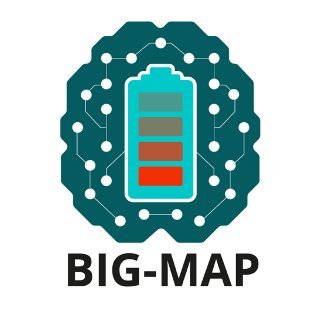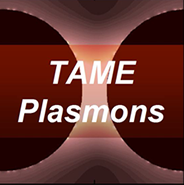Main ongoing projects

MaX – Materials design at the exascale – is a European Centre of Excellence for HPC applications coordinated by CNR-Nano Modena: a coordinated effort of an outstanding team of European leaders in the materials domain. MaX develops codes, workflows, and data platforms and makes them available for a large and growing base of researchers in the materials domain, thus enabling the quantum materials discovery and design in frontier science and industrial technologies. [read more]
Coordinators: Andrea Ferretti & Elisa Molinari

The HANAMI, HPC Alliance for Applications and Supercomputing Innovation, is a 3-year project involving 14 European research institutions, funded by the European High Performance Computing Joint Undertaking. It aims to enhance the development and performance of European and Japanese High-Performance Computing applications by harnessing the collective skills and expertise of the scientific communities in both regions. It focuses on applications in the domains of climate and weather modelling, biomedical applications and materials science developments, in relevant research areas that can benefit from closer collaboration in the development of HPC applications. The main objective of HANAMI will be porting existing codes and testing and evaluating application performance on new computing architectures. It will also facilitate access for European researchers to advanced supercomputing resources like Fugaku and, in turn, will enable Japanese partners to access EuroHPC systems.
Cnr Nano coordinator: Daniele Varsano

OpenModel – The EU-funded OpenModel – Integrated Open Access Materials Modelling Innovation Platform for Europe project is developing an open-access materials modelling platform that aims to provide a comprehensive solution for Europe’s materials modelling needs. The ultimate goal is to standardise materials modelling workflows, provide easy access to data and foster innovation by offering a solution that can be adapted to various industries. [read more]
Cnr Nano Coordinator: Arrigo Calzolari
Former projects

CNR-Nano coordinates the INTERSECT (Interoperable Material to Device simulation box for disruptive electronics) consortium. The INTERSECT project wants to leverage European leadership in materials modelling software and infrastructure to provide industry-ready integrated solutions that are fully compliant with a vision of semantic interoperability driven by standardized ontologies. [read more]
Coordinator: Arrigo Calzolari

BIG-MAP – Battery Interface Genome – Materials Acceleration Platform – is a large project, part of the large-scale and long-term European Research Initiative BATTERY 2030+. BIG-MAP proposes a radical paradigm shift in battery innovation, which will lead to a dramatic speed-up in the battery discovery and innovation time. BIG-MAP relies on the development of a unique infrastructure and accelerated methodology that unites and integrates insights from leading experts, competences and data across the entire battery (discovery) value chain with Artificial Intelligence (AI), High Performance Computing (HPC), large-scale and high-throughput characterization and and autonomous synthesis robotics. [read more]
Cnr Nano coordinator: Deborah Prezzi

I-Qubits is a collaborative Research and Innovation Action (RIA) addressing the development and experimental demonstration of integrated quantum bits (qubits) and control and readout circuits in commercial silicon semiconductor technology, as the enabling fundamental building blocks for the implementation of the future emerging Quantum Computing (QC) hardware technologies. [read more]
Cnr Nano coordinator: Filippo Troiani

LESGO – Light to Store chemical Energy in reduced Graphene Oxide for electricity generation is a FET PROACTIVE H2020 funded project. LESGO proposes to store energy in the C-H bond of reduced graphene oxide (rGO-H). It can be stored safely, exhibits an energy density more than 100 times larger than that of H2 gas, and can be easily transported wherever the electricity generation is needed. LESGO will demonstrate that rGO-H can become an ideal energy stock at an affordable cost and used to supply electrical power on demand where it is required. In the complete cycle from sun light to electrical power the raw material for storage evolves from graphite back to graphite with no CO2 emissions in any intermediate step. [read more]
Cnr Nano coordinator: Valentina Tozzini


TAME-Plamons is a ERC funded project aiming to develop a theoretical chemistry approach to directly simulate, with the help of HPC, the real time evolution of molecules interacting with plasmons and light. The proposed approach lifts the current theoretical limitations by coupling a real-time quantum chemical description of the molecules with a time-dependent electromagnetic description of plasmons. This new approach is implemented in an open-source software, accessible also to non-specialists. [read more]
Reference person: S. Corni

Super (Supercomputing Unified Platform – Emilia-Romagna) is a project funded by the Emilia Romagna Region under POR-FESR with the aim to extend the supercomputing and storage infrastructure to support both scientific and industrial use cases. This includes the advanced materials domain, characterised by the increasing demand for HPC/HTC which enables the predictive simulations of complex systems and processes and the screening of materials with certain properties. [read more]
Cnr nano coordinators: Andrea Ferretti and Daniele Varsano
National projects that exploit advanced simulations
- EXC-INS – Excitonic insulator in two-dimensional long-range interacting system | PRIN 2017 2017BZPKSZ. Reference persons: M. Rontani and D. Varsano
- ASTAR – Attosecond transient absorption and reflectivity for the study of exotic materials | PRIN 2017 RKWTMY. Reference person: S. Pittalis
- HARVEST – Learning from natural pigment-protein complexes how to design artificial light-harvesting systems | PRIN 2017 201795SBA3. Reference person: D. Prezzi
- MONSTRE2D – Monolithic strain engineering platform for two-dimensional materials | PRIN 2017. Reference person: V. Tozzini
Scientific projects in HPC supercomputers
- ANCIENT_ROME – Study of many body excitations in defective titanium dioxide materials by ab-initio Methods. PRACE Project Access (Call 19). 30M core hours. (C. Cardoso). 2019-2020.
- EXTEND – Excitonic instability in two dimensional tungsten Ditelluride. PRACE Project Access (Call 19). 45M core hours. (D. Varsano). 2019-2020.
- SENT_TO_NY -Study of Covered and functionalized TiO2 nanostructures: The role of many-body effects. PRACE Project Access (Call 17) 30M core hours (I. Marri). 2018-2019.
- SIDEX – SIze DEpendence of the EXcitonic properties of MoS2 nanoribbons from many-body perturbation theory. PRACE Project Access (Call 15). 59M core hours. (P. D’Amico). 2017- 2018.
- STREET_OF_NY – Study of optoelectronic properties of titanium dioxide nanosystems in the frame of the many body perturbation theory. PRACE Project Access (Call 14). 38M core hours. (I. Marri). 2017-2018.
- TERAX -Carbon-nanotube excitons in the THz frequency range from first-principles many-body perturbation theory. PRACE Project Access (Call 14). 58M core hours. (D. Varsano). 2017-2018.
- SMoG – Simulation driven Morphing of supported Graphene. PRACE Project Access – (Call 13) 15M core hours, (V. Tozzini) 2016-2017.
- EyESPOT – Electronic states in pure and doped rutile and anatase TiO2. PRACE Project Access (Call 12) 20M core hours, (D. Varsano) 2016-2017.

